Every year when the violets begin to bloom, I find that tending my to-do list gets a bit more difficult! I would rather go daydream with the violets and clouds! I start to really relate to all the paintings of women dancing in the woods with the fairies!
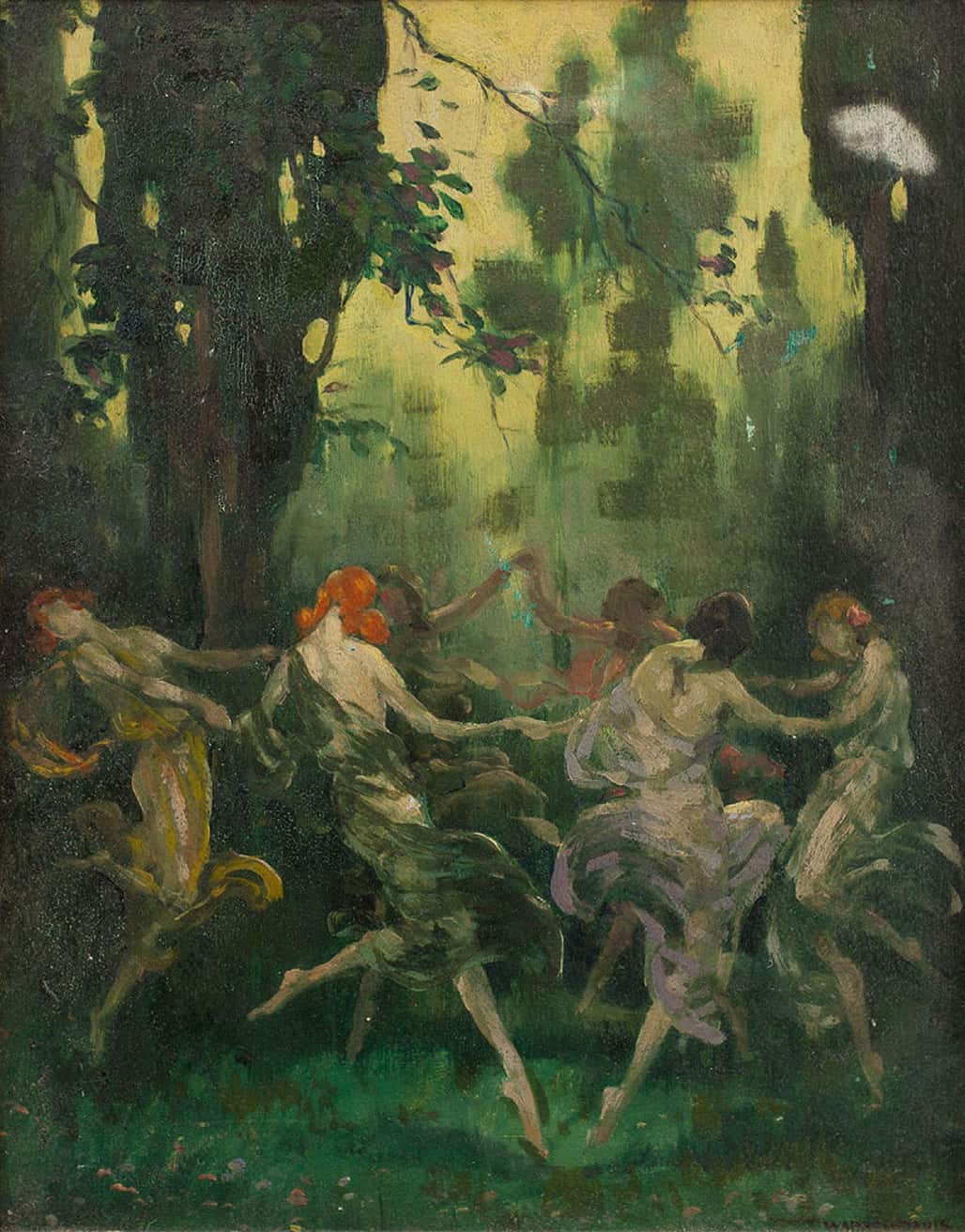
Warren B. Davis, Women Dancing in a Circle
I remember one year, I had about 18 students on an herb walk and one woman wandered off into the forest, without anyone noticing. At one point we realized she was gone and started searching for her. About 2 hours later she emerged, relaxed, happy, glazed eyes… She was so confused as to the concern we had and said she found an elder tree and a patch of violets and just decided to sit there for awhile. HAHA, awhile. In the fairy realm, you lose track of time, which is exactly what she did!!
Anyway, we ALL agreed that she had gone into fairy time and forgave her (big smile). It is true, I do think we could all use a little more time languishing with the violets.
If you’ve ever taken a few moments to admire this ephemeral spring flower up close, you know what I’m talking about – the color alone! So I wanted to share a violet syrup recipe that lets you bottle the color, magic and fragrance to use all summer in mocktails and cocktails, or drizzle over pancakes, waffles, or oatmeal.

Violet: Benefits and Lore
Folk medicine is rich with uses for violet. In Europe, violet’s use in the kitchen and home herbalism dates back to at least medieval times. This use was documented by Hildegard von Bingen, an abbess who wrote influential works on science and medicine in twelfth-century Germany, who used violets for many issues, including lifting melancholia.
What a way to describe an herbal medicine, right? Lifting melancholia. I love that.
More recently, my herbalist colleagues, Rosalee de la Forêt and Emily Han, devoted a whole chapter to violet in their book, Wild Remedies, writing that it supports the lymphatic system and skin, calms the nervous system, and supports restful sleep.
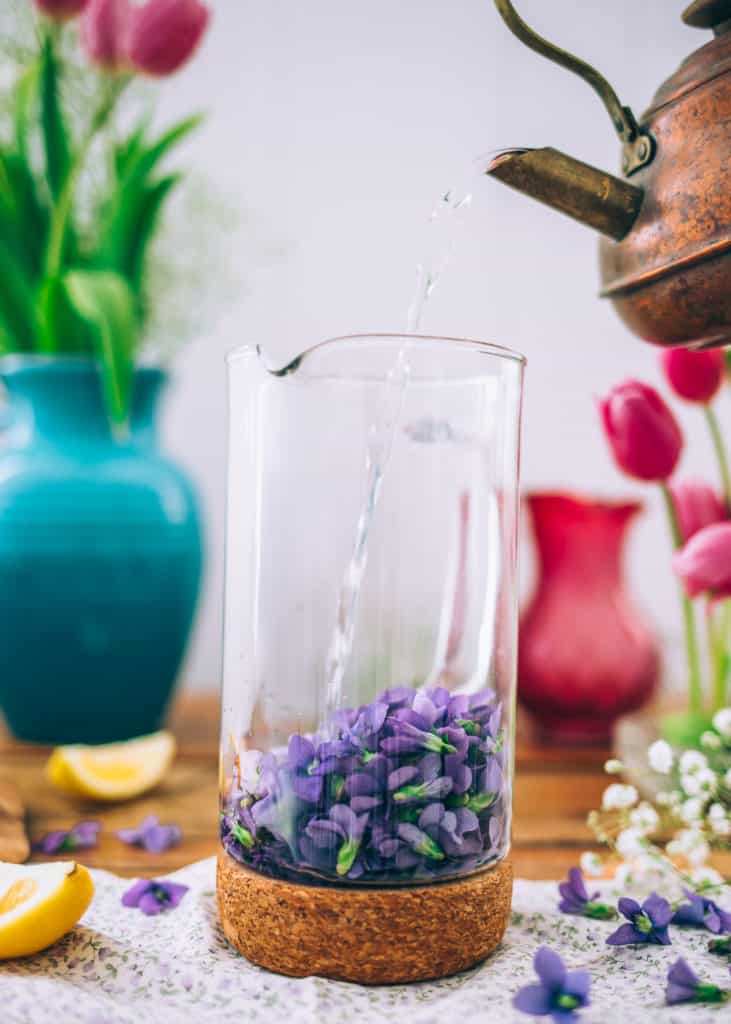
Violet also has a long history of use in India, where cultivated sweet violet (Viola odorata) is applied in the traditional medical system of Ayurveda to ease inflammatory flare ups and respiratory conditions marked by a dry cough. Research from India has also shown that violet contains small amounts of salicylic acid, a precursor to aspirin that helps modulate inflammation.
Although not the focus of this post, it’s worth noting that violet has many external uses. One example is from Amber Magnolia Hill of Mythic Medicine, a student of mine from many years ago who received direction during a plant meditation to put violet into her ears. She did, and it helped catalyze the resolution of a longtime ear problem.
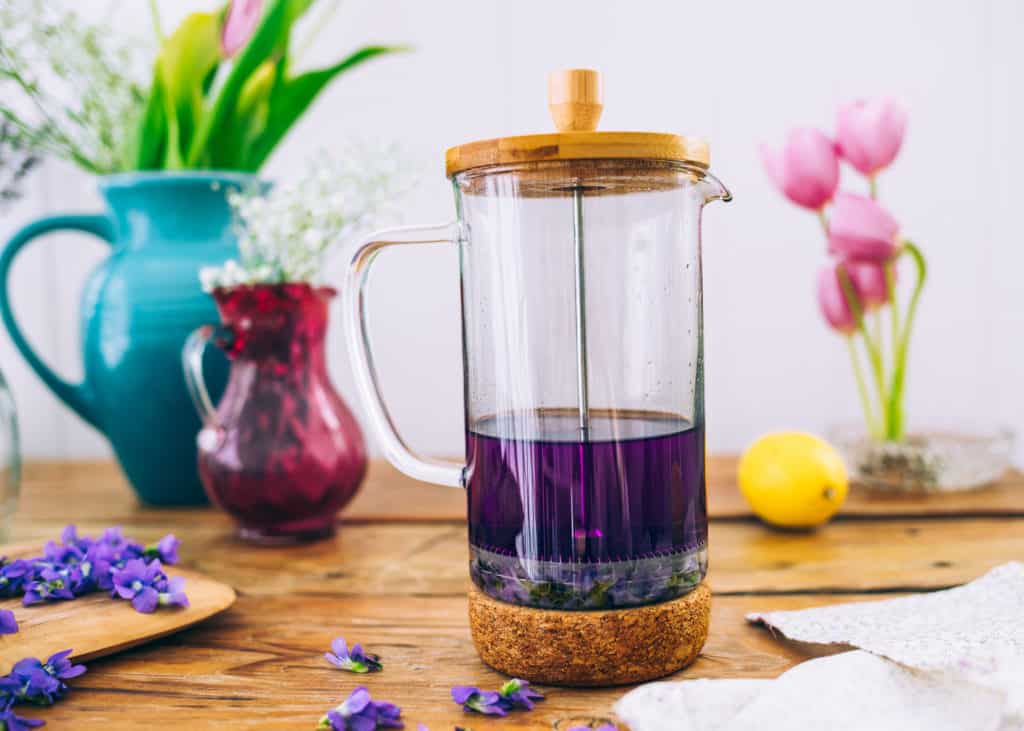
Notes for Gathering
Of more than a hundred species of wild violet, all are edible. Violet species share many properties, including flowers that are cooling and mucilaginous. Still, some varieties taste fresh and floral, while others taste a bit like soap. It’s wise to taste a blossom from the patch before harvesting so you don’t end up with a syrup with an unpleasant aftertaste.
The violets you find growing in your yard are most likely common blue violet (Viola sororia), a highly palatable variety that tends to grow like a weed. Although there are white and yellow varieties, for this violet syrup recipe you’ll want to use purple for the jewel-like color it will give your violet syrup recipe.
Beginning wildcrafters: If you’re new to identifying violets, use a plant identification guide to ensure you have the right flower. Make sure the patch you’re harvesting from isn’t sprayed with pesticides and that you have permission to harvest there. It’s also considered good practice to harvest only from abundant patches, taking no more than 1/10 of any plant population when wildcrafting, and to approach the process in a spirit of reciprocity – what can you give in return?
And, as you fall more and more in love with violets, you will want to create the partial shade and moist conditions so they can grow right next to you!

Honey or White Sugar?
For those more interested in health benefits and botanical flavors than appearances, I wanted to offer an option to make this violet syrup recipe with honey or another sweetener of your choice. Honey has been used in folk medicine around the world since ancient times, primarily to make herbal remedies more enjoyable to take. If possible, use raw honey for its antioxidant and immune-supportive properties, and be cautious not to overheat it.
If you’re looking for a violet syrup with the brightest color possible, you’ll want to use white sugar. Unfortunately, honey darkens the syrup. White sugar will also give your violet syrup a longer shelf life.
Choose the sweetener you prefer!
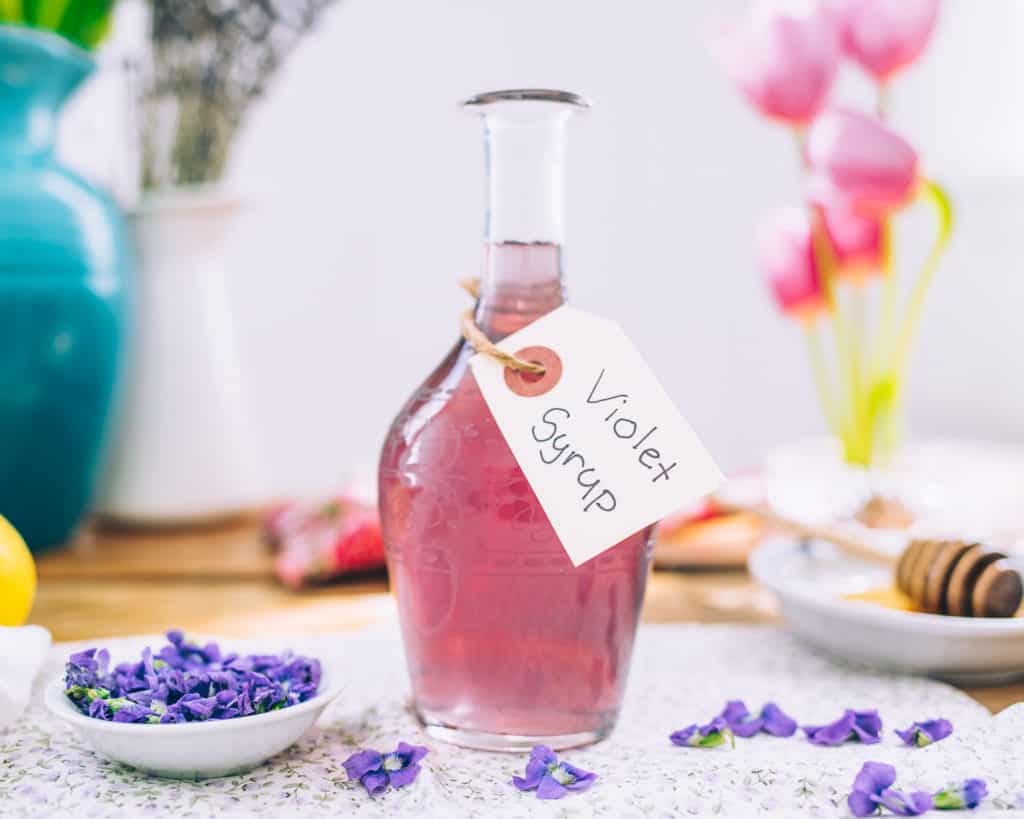
Violet Syrup
Ingredients
- 1 cup fresh purple violets (Viola spp.)
- 1 1/2 cups hot water
- A few drops of lemon juice (to help turn the infusion purple)
- 1/2 cup local honey, sugar, or sweetener of your choice
Instructions
- Put the violet blossoms in a glass jar or stainless steel bowl.
- Pour the hot water over them.
- Add the lemon juice.
- Let steep overnight.
- Strain.
- Heat the liquid gently over a double boiler, adding your sweetener and stirring until blended. If you are using honey, only warm the liquid slightly, just enough to stir in the honey.
- Store in the fridge.
An Invitation to Slow Down
Remember how I said when the violets bloom, it’s hard to get any work done? I have a feeling that’s part of violet’s medicine. These ground-dwelling flowers invite us to return to a state of wonder and pure presence, more highly attuned to our fleeting experience as living beings on the earth. It’s such an essential thing to remember, and yet it’s so easy to forget when we’re in a constant state of hurry.
Leaving a few emails unanswered or the laundry unfolded and taking an hour or two to gather blossoms and craft this violet syrup recipe may be a small act of rebellion against the forces that disconnect us from the life-giving earth – and one of the most enjoyable ways I know of to reconnect to the magic of it all.
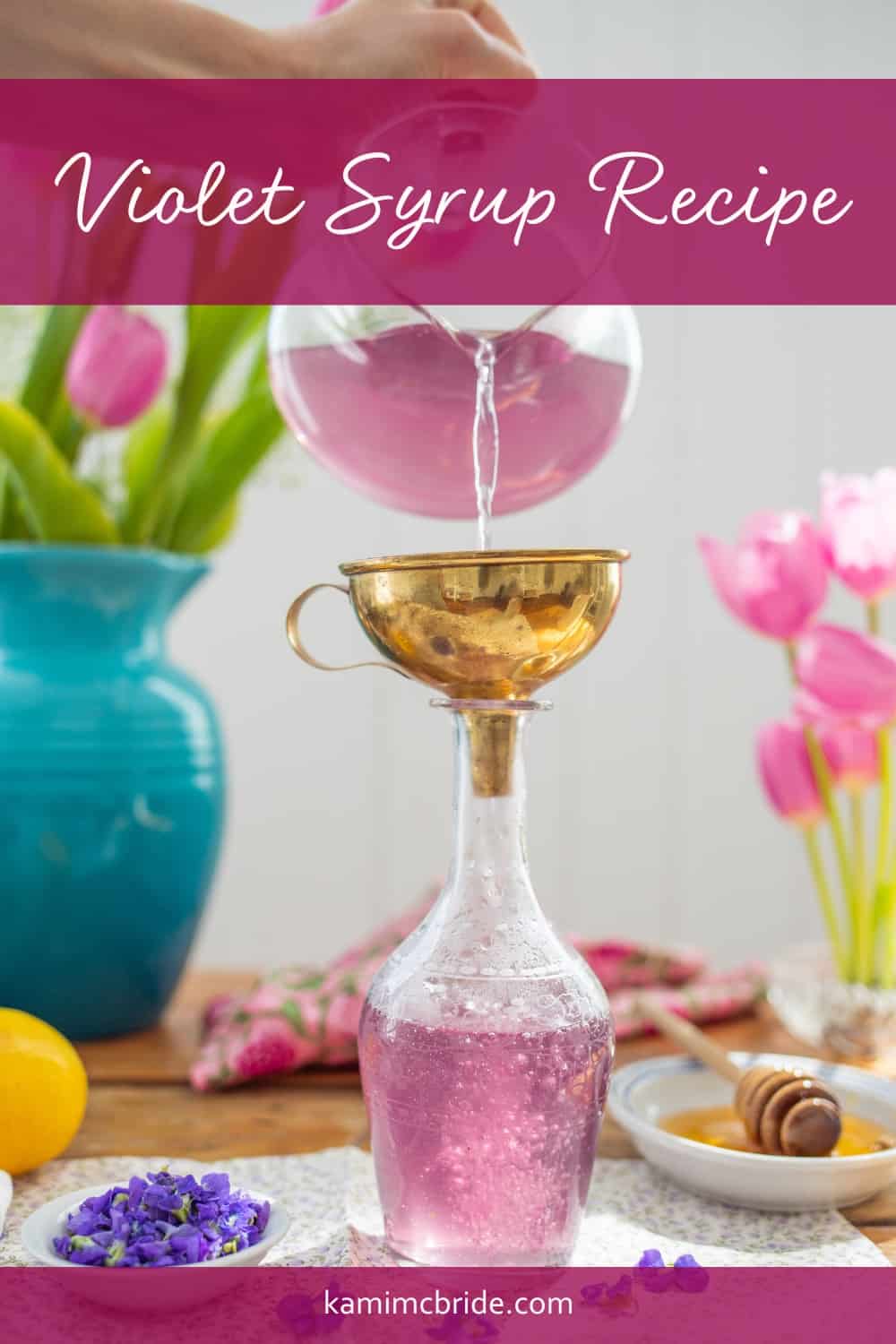

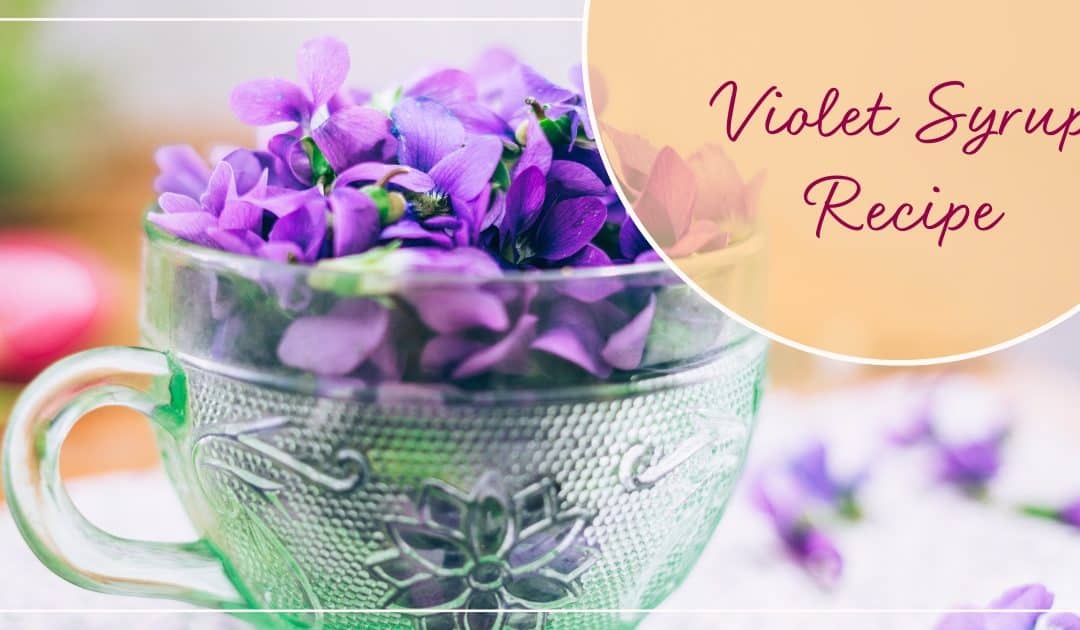
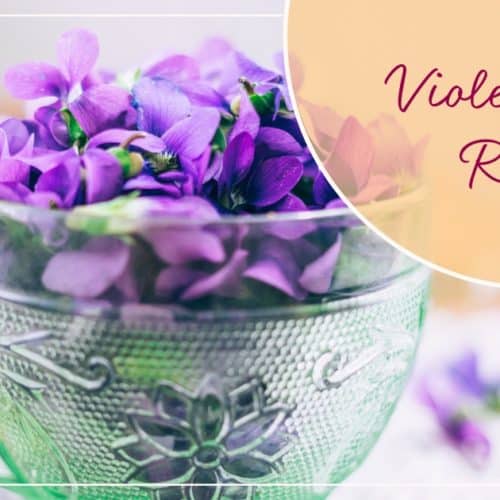

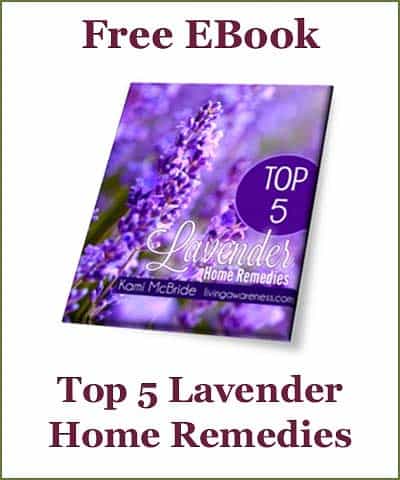
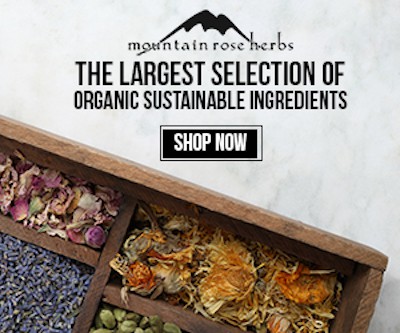
Kami, I wondering if I can use dried violet flowers. It’s now end of June here in upstate SC. I collected my flowers in February & march. I would prefer to use local raw honey for syrup.
Yep, dried flowers are fine!
Thank you Kami! Beautifully written. I’m going to look for the violets and see if I can make the syrup. ❤️
I’ve only thought of violets as pretty and decorative so enjoyed learning about their more practical uses. Thank you for sharing! 🙂
Thank you Kami, I enjoyed your lovely blog post so much and will try out the violet syrup recipe when I find enough violets xxx
LOVE you gold funnel!
Such a lovely post, thank you. Fun that you call being immersed in the forest Fairy Time. It truly is. It happens to me every time, I walk out my door and into the forest and time slows and seems to not exist, just presence, not thoughts of the past or future. Then I feel hungry and consider it must have been an hour and I learn it had been 3-4 hours. I love that, so much!
Beautiful reminders for the busy mom!
Violets are my first memory of a plant trying to get my attention, I was still a little girl. It always appears when there is a spiritual matter of the heart with me or someone close, like my mother . There is a VERY DEEP connection between me and violets. Nowadays when violet season comes around I make my rounds between mine and wild patches, picking flowers and leaves every two days in the mornings. Rest does not come to mind, more like back aches. The flowers, except the yellow ones, are turned into syrup that I use for everything.… Read more »
Beautiful Kami thank you.
My pleasure, enjoy!